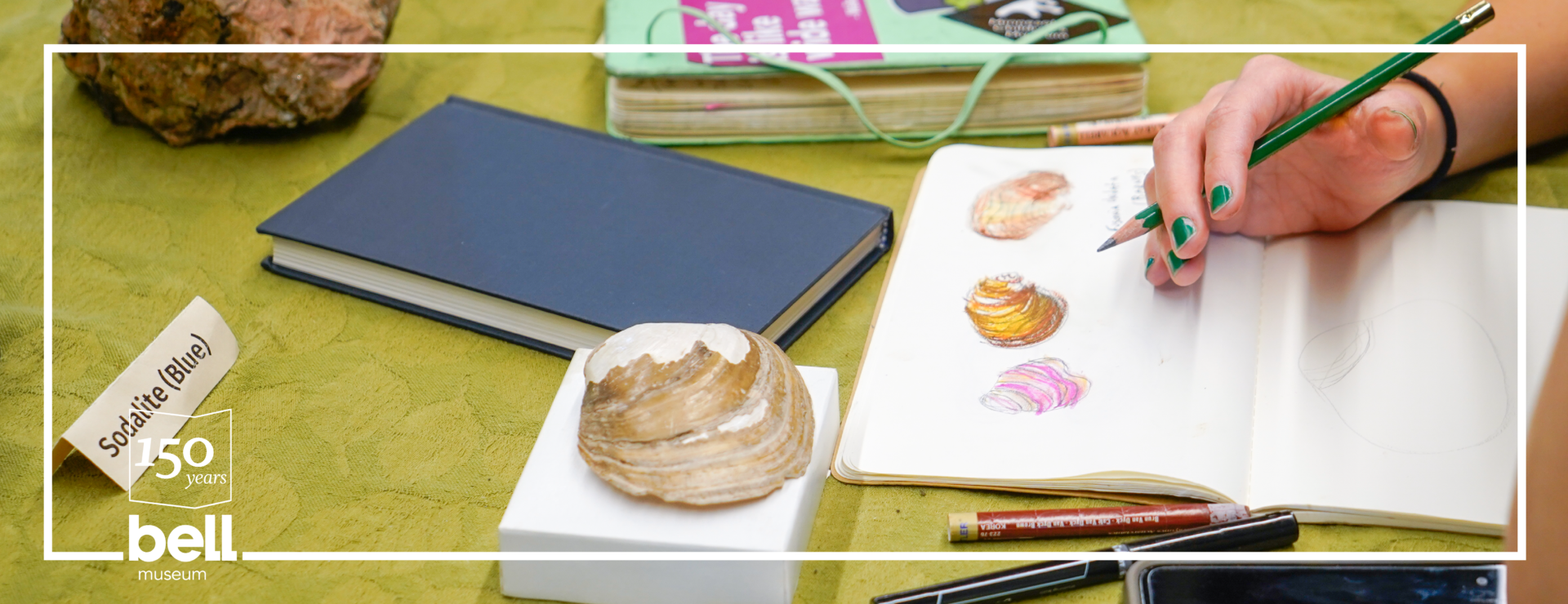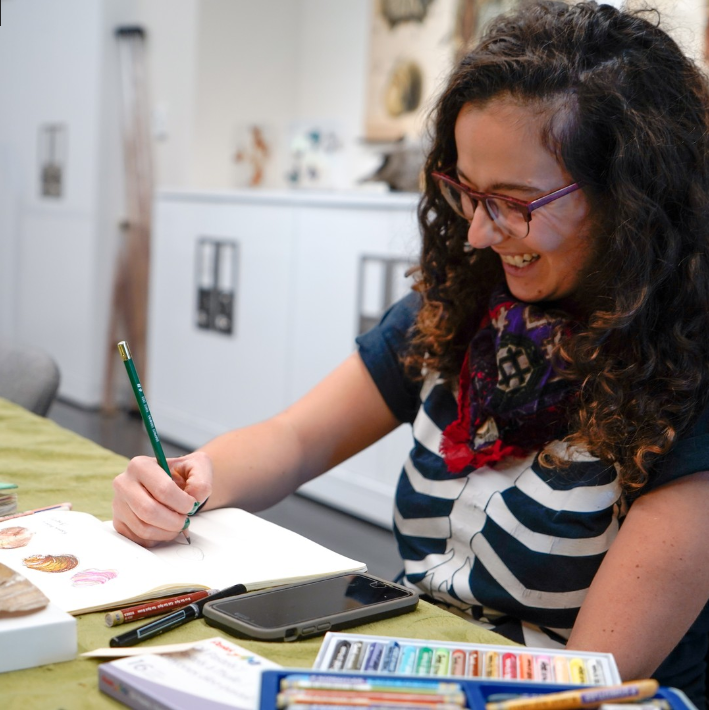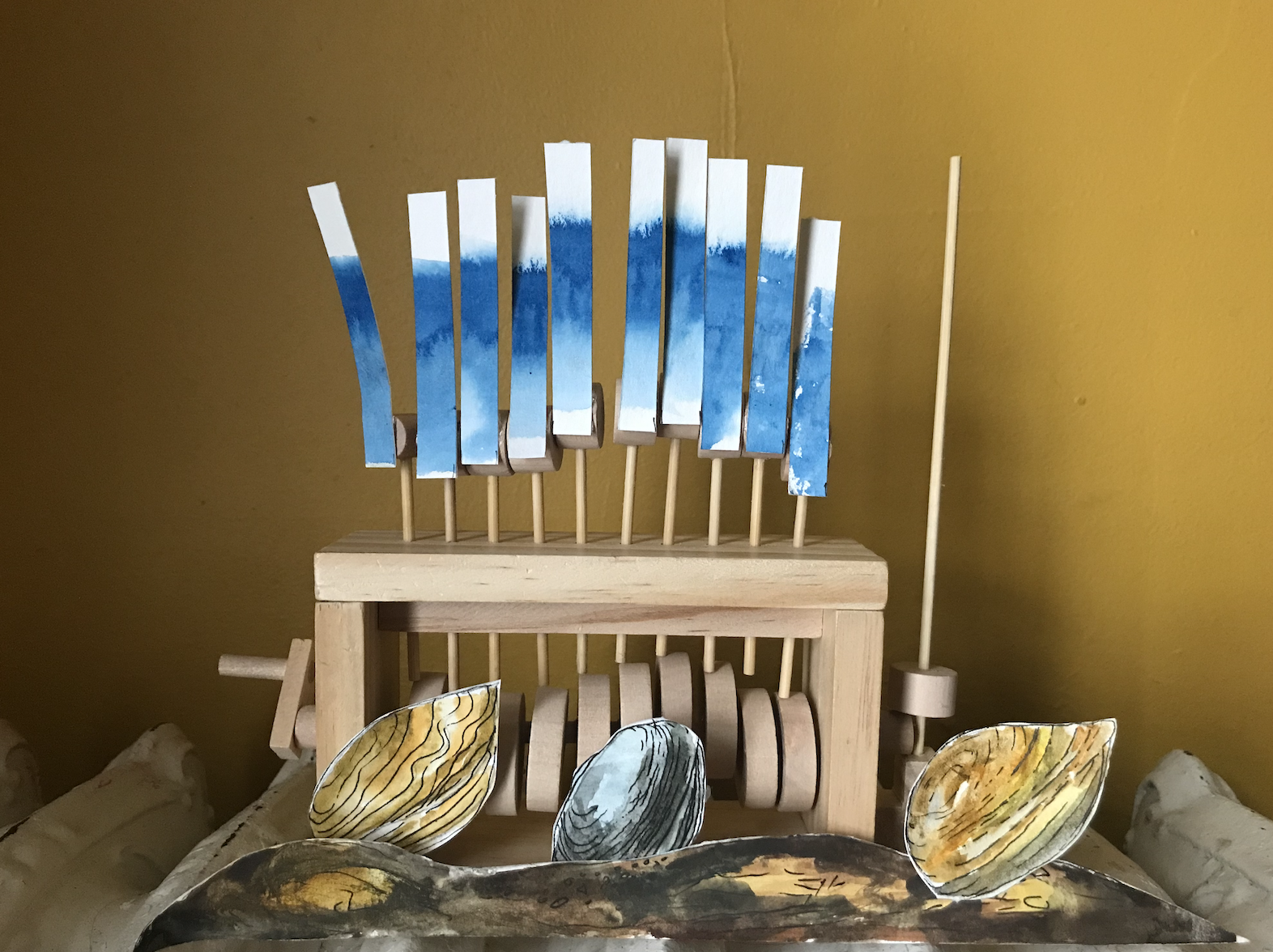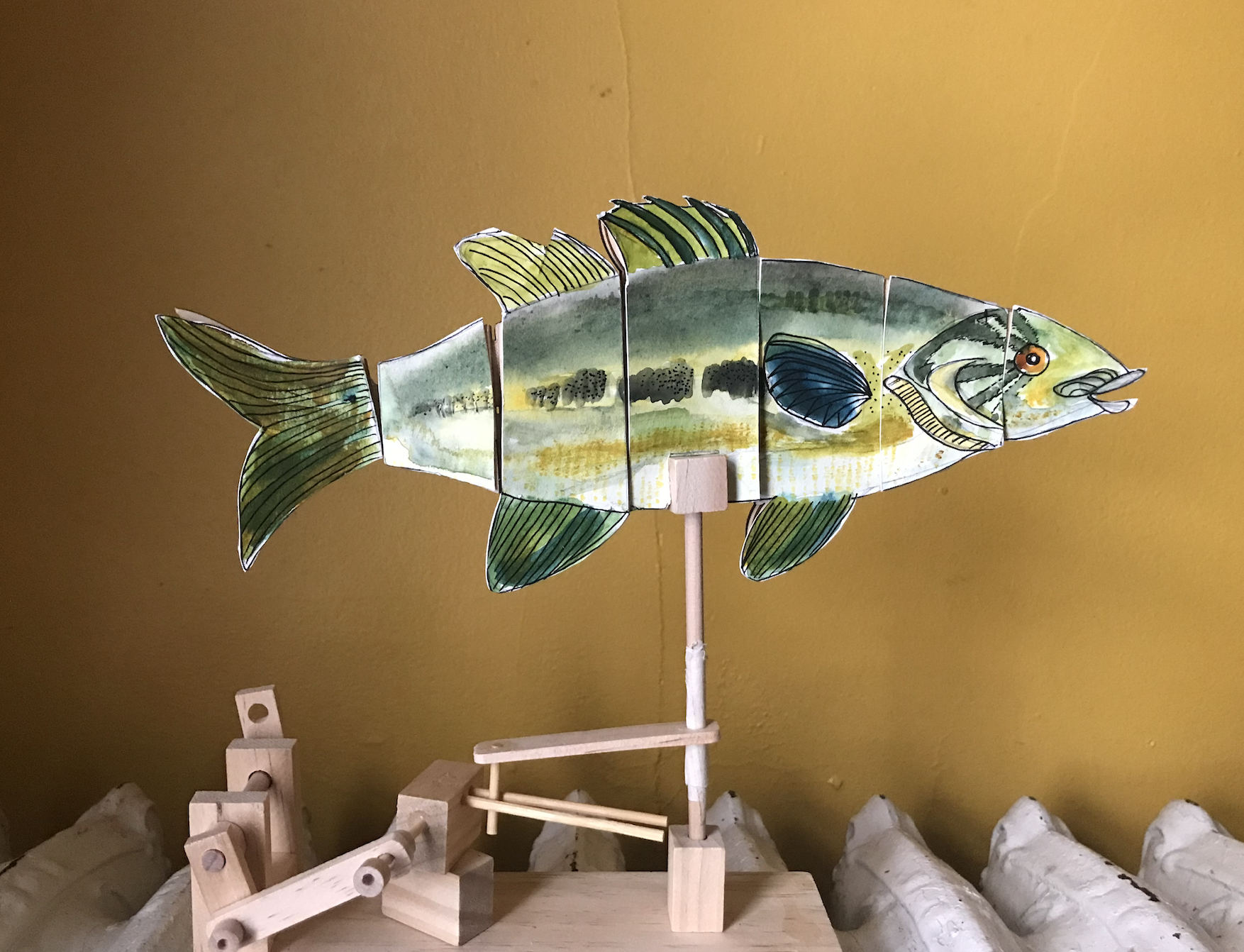
Musings on Mussels and Mysteries: A puppeteer’s exploration into the Bell’s collections
Published01/17/2023 , by Felicia Cooper
There is a grotesque nature to fish preserved in jars of formaldehyde. It is worth noting that from ages 8-14, I had a vague phobia of fish. Creeped out by their unblinking eyes and seemingly breathless movement, I avoided aquariums at all costs. Somehow, I got over this fear, mostly by plunging myself into lakes. Similarly, I plunged into the Bell Museum’s collections with abandon—not even plugging my nose! I invite the readers of this blog to come and witness our work together in the form of a puppet show, taking place January 21 on the hour at 11 am, 12 pm, 1 pm, and 2 pm.

In working as a resident artist at the Bell Museum, I’ve been continually and pleasantly surprised at how little I know. As a habitual museum goer, I deeply enjoy the act of wandering aimlessly in wonder. While the Bell Museum offers the experience of losing oneself to its visitors in spades, it is only through this residency that I’ve begun to understand how the museum offers this so keenly. I have been thrilled by the scholarly research, astute curation, and truly astounding collection.
As an artist, natural history helps me to understand where we are going and how we are getting there. A map to now and a way of looking forward through a mirror, I am comforted through understanding the history of the natural world—of which humans are a significant part. There is a specific aesthetic value, to be sure, in the cataloging of thousands upon thousands of spore prints, insects, and yes, dead fishes in jars. Research helps me to more clearly frame and tell a story—it helps support and give credit to the things which we know instinctively and gives us a way to illustrate it to others. When I am led astray within an idea, I seek out the ways I am not alone in it.
In a conversation with Bell Museum Curator of Fishes Dr. Andrew Simons, I learned about collections as a way to understand the passage of time and its effect on evolution. He shared that
“[when we look] at the shape of bird wings over time, we can see that birds that have been living in cities start to evolve shorter wings, presumably to help them become more maneuverable—and we can do that because we have collections. We can go to a collection and measure a bird wing from the 1700s, the 1800s, and the early 1900s, and we can compare those with the length of sparrow wings in cities today. So we have this time sequence. It’s not a very long time sequence but it’s long enough that we can start to look at some changes.”

University of Minnesota graduate student and curatorial assistant Sean Keough expanded on that idea, saying,
“I think natural history museums are so so so important. Each specimen is a record of a species’s existence at a given location at a given time. And so in the aggregate, all the specimens of a natural history museum let you look at changes in biodiversity across history and time. That’s what we’re trying to do in conservation science. The raw data that a natural history museum protects, that’s priceless. The raw data is an engine for conservation initiatives.”
Beyond the practicalities of use within the collection, Simons talked through some of my own misconceptions surrounding natural history museums. When I asked about collections being affected by global violence and destruction, Simons offered a different perspective. Rather than a separation between human activity and natural activity, he helped frame humans as part of the ecosystem. Humans affect our natural world, and in doing so, we are part of nature. He continued,
“We have this bias—maybe it comes out of the fact that this is a Judeo-Christian culture—we have this idea of nature existing before the fall of man or the flood. Then landscapes that exist afterwards, so that there’s this negative impact of humans, but we’re definitely part of the landscape. Even cities are part of the natural world. Trying to exclude ourselves from the natural world seems really artificial because we’re products of evolutionary processes. We have all of these structures that we’ve obtained, essentially from inheriting them from ancestors. The things that we do in the world are very much part of the natural process. We try to put a value on that and say, no, we have to go back to some preexisting state, but that’s not possible. It seems like a fool’s errand. I do think we’re part of the natural world. I think that the name natural history serves us as a way of distinguishing it from art history or religious history or something like that. The French use the word history as ‘the story of,’ to refer to a sequence of events.”
Humans are a constant part of this history, whether implicitly or as casualties of human conflict. It is a false ideal, present in colonial thinking, to view nature as something to visit or experience. Nature is part of us and we are part of it.

Natural history, broadly, is a story of how we got to where we are. Not a history of nature as separate from the history of humans, but a story of how history has moved together as a whole. In places of military conflict, natural disaster, and catastrophe, that nature shifts and changes. Collections record those changes as they happen. For example, in the Bell Museum’s Herbarium, a pressed plant from England is interrupted by char and tears. On a tour, Tim Whitfeld, Herbarium Collections Manager, explains that on May 4, 1941, the Central Library and World Museum in Liverpool were bombed. The charred pages tell us not only the story of the specimens themselves but of their specific environment. In our present political landscape, we look to Ukraine. This year, windows were shattered in the Kyiv Art Gallery, the National Research and Restoration Center, the National Natural Science Museum of the National Academy of Sciences of Ukraine, and more.
In my work, I have been fascinated by such things as toy trains, alterity, the concept of home, and the ecological protection of whales. I have gratitude that my art supports wild questions, deep dives into specific interests, and allows me to share this with others. Museums do, too. The experience of visiting a museum is a step into Aristotle’s paradox of knowledge. As we view the shape of a shell, a representation of gasses on a planet, or the biodiversity of Minnesota, we begin to understand how much we do not know. This moves in a cycle, satiating curiosity only to create more space for that very same. A collection is a rich space for not only inspiration but for continued inquiry into the nature of which we are a part. I think of a quotation from American author, anthropologist, and filmmaker Zora Neale Hurston: “Research is formalized curiosity. It is poking and prying with a purpose. It is a seeking that he who wishes may know the cosmic secrets of the world and they that dwell therein.”
My thanks to the patient Dr. Simons, Professor Mark Hove, and graduate student Sean Keough, who dealt ably with my cannonball questions, and to Bell staff members Jenny Stampe, Jennifer Menken, and Emily Dzieweczynski for their support and assistance.

